The Woolworth Building is an early American skyscraper, designed by architect Cass Gilbert, and completed in 1913, at 233 Broadway, Manhattan, New York City. The original location for the skyscraper was purchased by F. W. Woolworth and his real estate agent Edward J. Hogan from the Trenor Luther Park Estate and other owners for $1.65 million on 15 April 1910.
Woolworth and Hogan had acquired the final site for the project, which cost them a total $4.5 million, by 18 January 1911. It remains standing today, at 792 feet, more than a century after the start of its construction. It is one of the twenty tallest buildings in New York City, as well as one of the one-hundred tallest buildings in the US: a National historic landmark since 1966 and a New York City landmark since 1983.
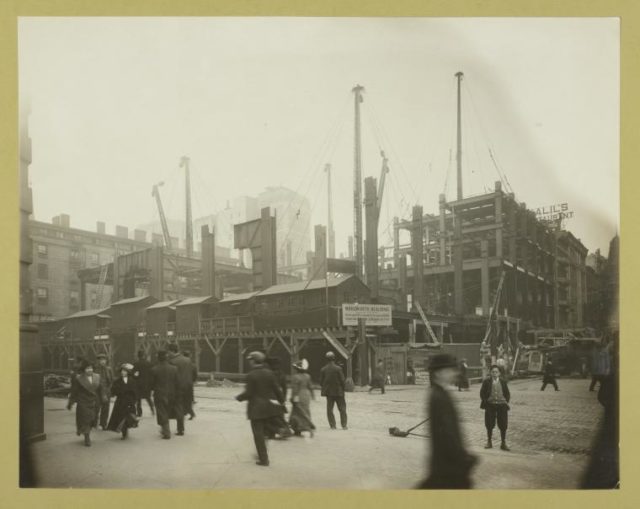
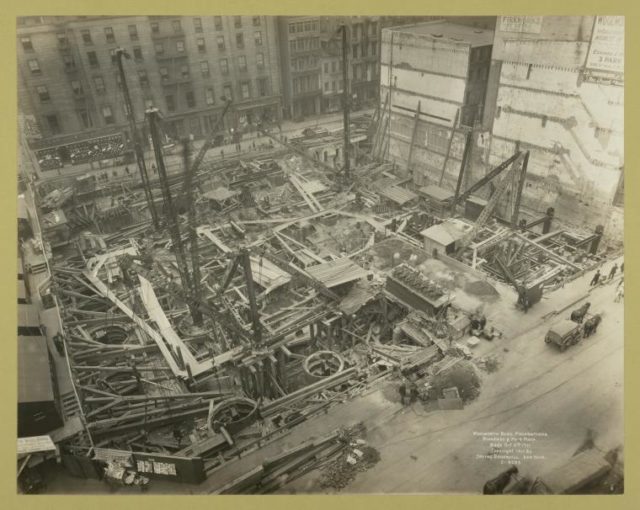
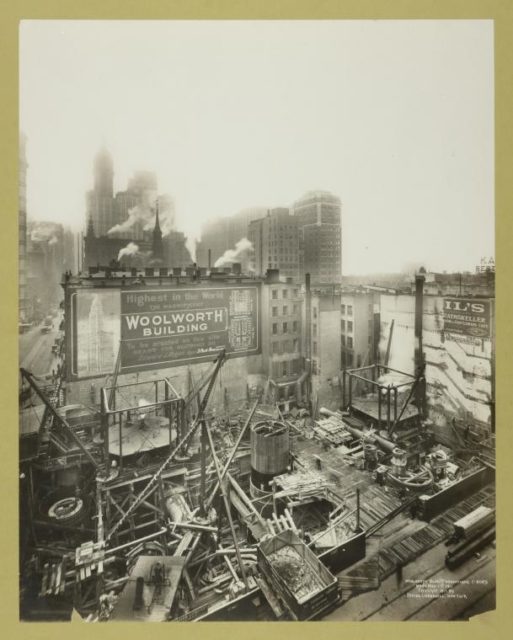
Frank Woolworth commissioned architect Cass Gilbert, in 1910, to design the Woolworth Building, a 20-story office building to be used as the F. W. Woolworth Company’s new corporate headquarters located on Broadway, between Park Place and Barclay Street in Lower Manhattan, opposite City Hall. Gilbert designed the building in the neo-Gothic style. The corporate headquarters was originally designed to be 420 feet high, but the building was eventually elevated to 792 feet.
At its completion, the Woolworth Building was sixty stories tall and had over 5,000 windows. Upon completion, the structure’s cost was $13.5 million. F. W. Woolworth set up the Broadway-Park Place Company to finance the building, along with the Irving National Exchange Bank, but by May 1914, had purchased all of the shares from the bank, thereby wholly owning the building. When completed, the Woolworth Building surpassed the record of the time for the world’s tallest building.
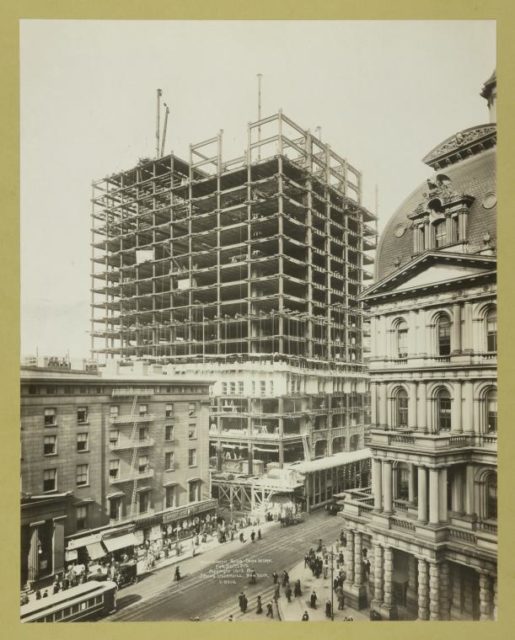
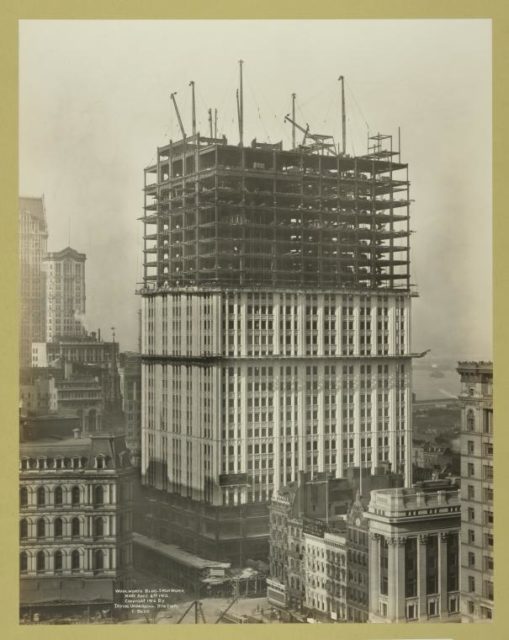
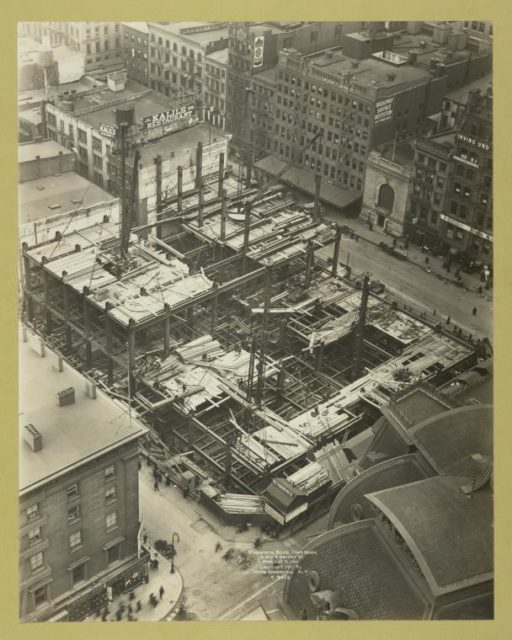
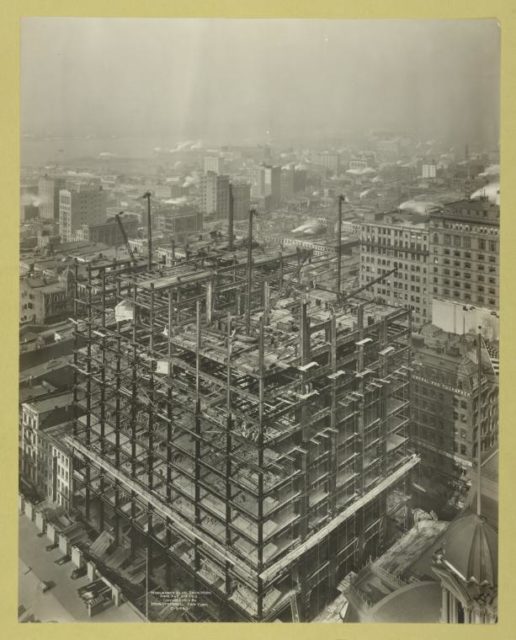
The building opened on 24 April 1913. That evening, President Woodrow Wilson turned the lights on by way of pushing a button in Washington, D.C., which alerted the engineers in New York to turn the lights on.
The Reverend S. Parkes Cadman called the structure ‘The Cathedral of Commerce’ in a booklet of the same name published in 1916 because of its similarity to the Gothic cathedrals in Europe. It remained the tallest building in the world until the completed construction of the Chrysler Building and 40 Wall Street, also in New York City, in 1930. An observation deck on the 57th floor of the Woolworth Building was the main attraction for visitors until 1941.
The building’s tower, even with the main frontage on Broadway, is joined to an office block foundation with a narrow internal enclosure for light. The external decoration was cast in architectural panels that were sandstone-colored, glossy terra-cotta. Strongly pronounced piers, which continue without interruption from cornices right up to the pyramidal cap, give the building its upward impetus. The Gothic detailing, focused on the building’s crown, is striking and can be made out at street level several hundred feet below.
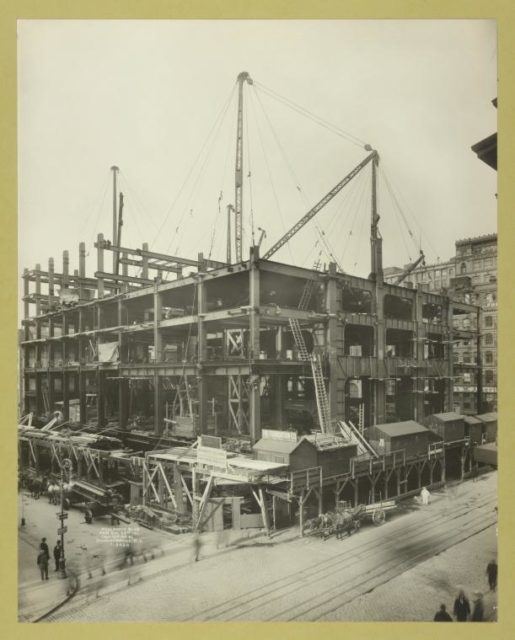
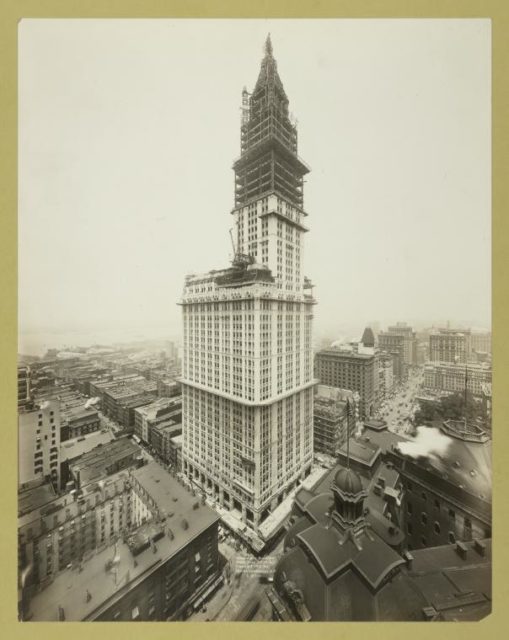
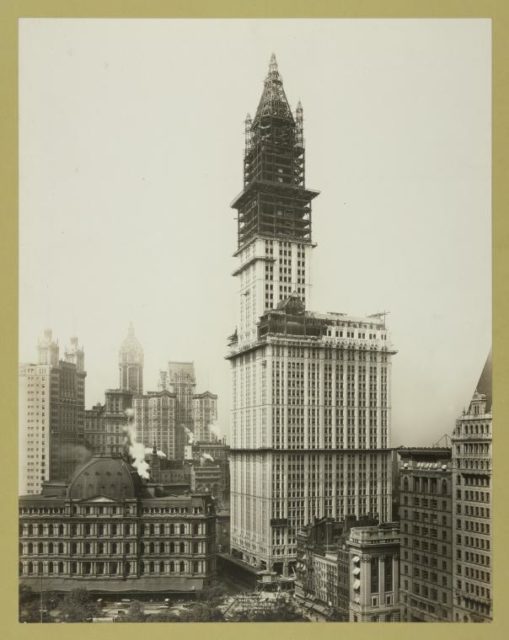
Gunvald Aus and Kort Berle were the engineers who drew up and developed the steel frame, which was supported on massive waterproof chambers, known as caissons, that penetrated to the bedrock. The innovative high-speed elevators and the superior office space-to-elevator ratio was fundamental to the financial success of the building.
Read another story from us: Panama Canal: Building a bridge between two oceans
The lavish, cross-shaped lobby was considered to be one of New York’s most spectacular built in the early 20th century. Covered in Skyros patterned marble, it contains a stained-glass light in its arched ceiling, mosaics, and bronze decorations. Above the galleries of the mezzanine are the murals of Labor and Commerce. Corbel sculptures throughout the lobby area include Woolworth counting nickels, Aus taking the measurements of a girder, and Gilbert with a replica of the building. Woolworth’s private office was fronted with a layer of marble in the Empire style of France and has been preserved. The Ehrenkrantz Group carried out a restoration to the building’s frontage between 1977 and 1981, during which much of the Gothic ornamental design was removed, and the terra-cotta panels were replaced with concrete.
